Movie releases 2016: Our cinemas’ vanishing history
SO MANY experiences have vanished from a night at the movies — and ‘pashing’ in the back row is just one of them. How many do you remember?

Central Coast
Don't miss out on the headlines from Central Coast. Followed categories will be added to My News.
IT IS one of the busiest times of the year at the movies as thousands of people pour in for the Christmas holiday season and prepare to catch the 2016 releases.
As they take their comfy seats at one of the region’s modern multi-screen cinemas, few will give a second thought to how completely a trip to the movies has changed.
Not only have scores of movie theatres disappeared from the social landscape but the whole movie going experience has changed.
Many of the old movie theatres have vanished — demolished or re-purposed and slowly fading from the collective memory.
HISTORY: M1 — THE ENGINEERING MARVEL WE FORGOT
Social etiquette has changed and things that used to happen at the movies are now considered a social gaff.
Here’s what you won’t see again.
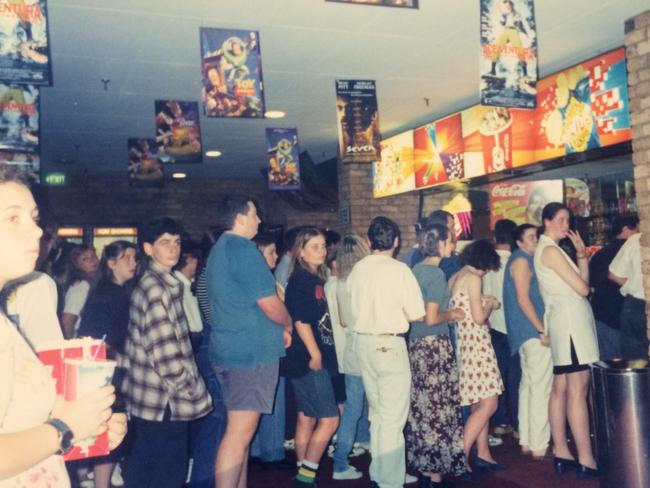
1. “Pashing” in the back row
This once common teenage rite of passage is on the long list of things that have gone from the movie going experience.
One movie buff (who preferred not to be named) recalled his days of movie snogging at the long since demolished Gosford Village Twin.
“I spent hours at the Village Twin. Didn’t see too many movies though — back row was my favourite spot,” he said.
“Last movie I watched there was the Executive Decision (1996). I went with a girl and sat in the back row watching very little of Steven Seagal and Kurt Russell. I can’t even remember the girl’s name ... how terrible.”
Another local recalled: “I remember seeing Jaws and Star Wars and Close Encounters and the original Friday the 13th at The Village Twin, but I don’t remember much else.
“Maybe it was all about snogging in the back row back then and what was on the screen didn’t matter much. “
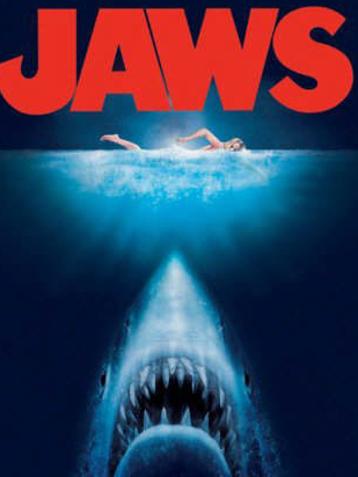
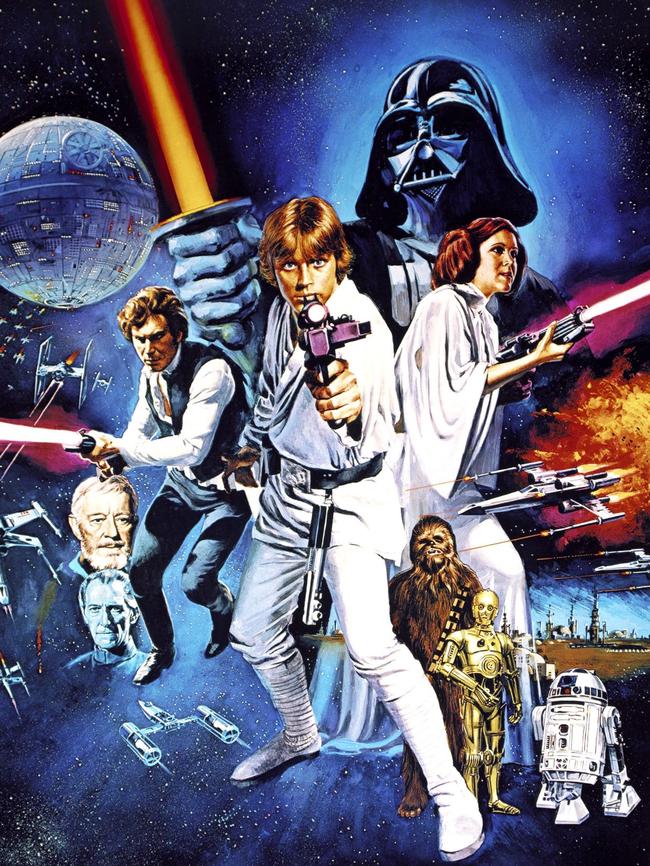
2. Movie going as an event
These days it’s all about getting in and getting out. It’s an activity, not a destination. But it was not always so.
Former Gosford Village Twin manager, Bob O’Shea managed the cinema from 1985 until it closed in 2002. He remembers those days fondly.
“When you went to the movies in our prime days it was an event,” Mr O’Shea said.
“We’ve lost the entertainment part of going to the movies — now you just go there, watch the movie. that’s it,” he said.
“People used to come in and wanted to be entertained.
“We would do up the entire foyer in the theme of the movie and all the staff would get dressed up.”
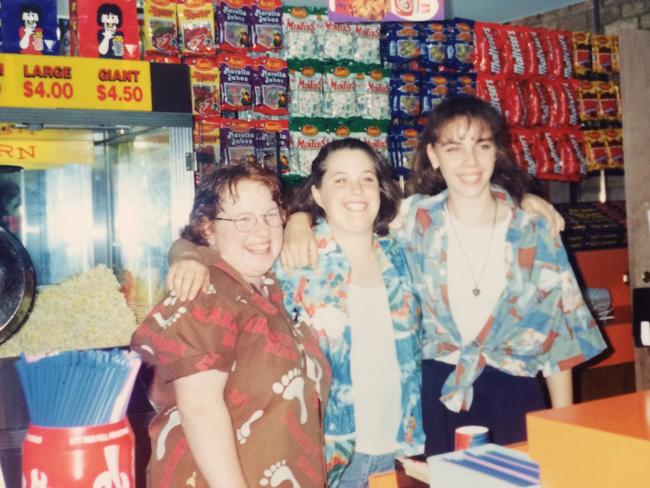
3. The seriously underrated “intermission”
These days it is not uncommon to sit through a bladder-bursting, attention-testing non-stop movie blockbuster that lasts two and a half hours or more.
Many will recall the days when you got two sensible length films for your ticket price — the B-grade support film first, followed by the main feature.
In between was the intermission during which everyone rushed for the toilets, or the candy-bar, or took a much-needed break from the pashing (see above).
Bring it back I say.
4. When Gosford was king of the coast
Caitlin Wood is the daughter of Gosford Village Twin manager Bob O’Shea and worked with her father in the cinema for years.
“The cinema was a mainstay of Gosford — it was a meeting place, a place to go.
“The railway nearby made it easy to get to.
“The sandwich bars and the shops around were always busy and full of people — it was a night out.
“Gosford was a really happy friendly place.
Another local remembered how the movies lured people into Gosford.
“The Village Twin was built right around when I started high school and it was the place for the Friday or Saturday night date
Back then Gosford was still the centre of the Coast universe. People from all over the coast thought nothing of a trip to the Village to see the latest blockbuster.”

5. Film projectionists and usherettes
Today’s digital movie theatres are fully automated with movies timetabled from remote sites. At the allocated time, the curtains automatically part and the movie action begins. You’re lucky if a teenage staffer collects your ticket at the door and usually people just sit where they like.
In the not so distant past, an army of usherettes took people to their allocated seats and prowled the theatre with a torch with which to detect pashing teenagers and other wrong doers throwing jaffas over the balcony rail.
Brendan Connolly is the co-author of the definitive history of Central Coast Cinemas, Paddocks, Palces and Picture Shows. He wrote the book with Les Tod, back in the 1990s.
Mr Connolly said in his many decades working in cinema he had done almost every role. He started as an usher even did the cleaning once when the cleaner was on holidays.
He later became a projectionist working with spools of film, and worked at many local cinemas including the Prince Edward (now The Majestic, The Entrance), Gosford Regal, Erina Drive in, helped start Cinema Pardiso at Ettalong Beach, Kincumber, Avoca.
He Was projectionist and manager at Erina skyline drive-in from 1974 until it closed.
He left the industry about 15 years ago.
“In those days there were more staff and everyone did everything. I even did the bill posting — that something from the old days — you never see that now.
6. Where did all the movie theatres go?
Between the turn of the century and 2007 at least 36 officially licenced movie theatres rose and fell on the Central Coast.
Some were grand architectural statements of their day while others were not much more than community halls which showed a film on a Saturday night to cater for locals and tourists.
Some of the old theatres are still standing but used for something else. If you know where to look, it’s easy to spot them.
Many were completely demolished. A small number are still operating. For the purposes of this article, we’ll look mostly at those that closed since the start of the 1970s.
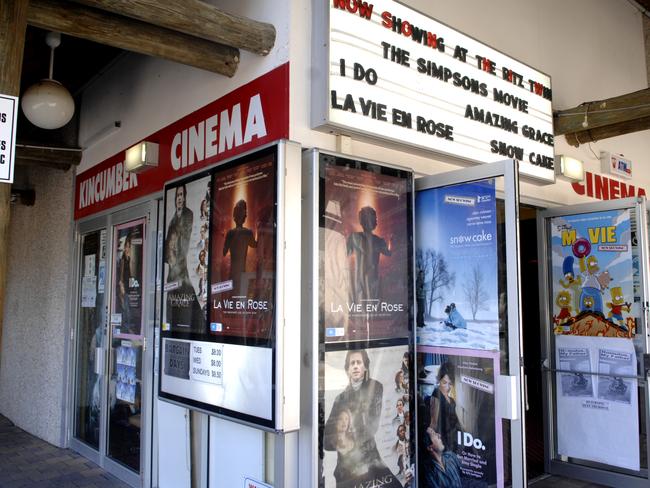
7. Kincumber Ritz (closed 2007)
The Kincumber Ritz was the most recent movie theatre to disappear from the Central Coast — closing in 2007 and the building demolished as part of the redevelopment of Kincubmer shopping Complex in 2012. The single screen cinema opened in 1988 with the hugely successful Australian film, Crocodile Dundee. It could seat 296 people. It was a struggle for the Ritz from the start and a new owner took over in 1989. That owner was threatening to close it after just a few months, and soon sold it. This new owner closed it for renovations and reopened in 1990. The cinema was put upforsale again in 1994. The final owners were Irene and Peter Wilkinson who closed it for the last time in 2007.


8. The Village Twin (closed 2002)
In it’s day, the Village Twin Cinema in Watt Street, Gosford was as fancy as it got in movie theatres. It opened just six days after the closure of the historic Regal a couple of blocks away. The first movie to show was the shark attack classic, Jaws. The twin-cinema could seat 1000 people — 600 in one and 400 in the other. With staggered movie times, it could show up to six different films a day. It cost more than $1m to build — huge money in those days.
One Coastie recalled its arrival on the local movie scene:
“I suppose the big thrill about the Village Twin was that it was new. All the other movie places on the coast were dusty old flea pits with horrid, battered seating that had all seen better days — or there was the drive-in at Erina. Plus it was a twin cinema so you had a choice of movies to see.”

Another said: “Back in the day it was the place to go when you couldn’t get into the clubs. So from 12-17 years of age it was the cool place to be seen.”
Former employee Caitlin Wood remembered her time there:
“Rainy days were busier and rainy days during school holidays were a nightmare
“We used to hold movie marathons — they were also challenging.
“The cinema would be packed- people bought their own sleeping bags
“You had to watch them so carefully — they’d sneak in alcohol or marijuana — and if you didn’t keep an eye on things, well some couples got a bit carried away.”
It remained at the centre of movies viewing for a decade before facing its first big challenge with the rise of home video.
For a while cut price tickets and other promotions kept the Village Twin, but the opening of the multiplex cinema at Westfield Tuggerah in 1995 was a more difficult problem. Eventually Hoysts bought the Village Twin and closed it for good in 2002 when it opened its own multiplex facility at Erina Fair. The building was demolished.
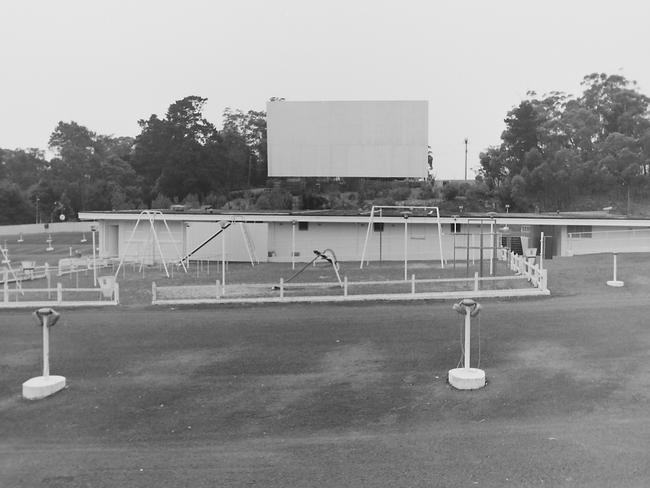
9. Erina Drive-in (closed 1985)
The Central Coast only ever had one drive-in — but it was known by a few names over the years: Erina Drive-in, Gosford Skyline, Greater Union Drive-in Theatre.
The drive in opened in February 1958 on land which is now covered by Erina Fair shopping centre. The four hectare site could hold 106 cars and its 31m x 14m screen could be seen from every parking spot. Over the years it included a barbecue area and cafeteria (staffed by chefs), children’s playgrounds, pony and train rides and there was little the owners would not do to lure and entertain crowds. Brendan Connolly’s book describes one publicity stunt in front of the cafeteria during the screening of 1966 classic Born Free. Eric worrell — founder of the Australian Reptile Park — put on a display with live crocodiles.
The Drive-in closed after 27 years in March 1985. The rise of home video largely blamed for its demise. The last films shown there were The Terminator and First Blood.
It stood derillict until 1992 when the screen was finally pulled down and the land disappeared under the car park.
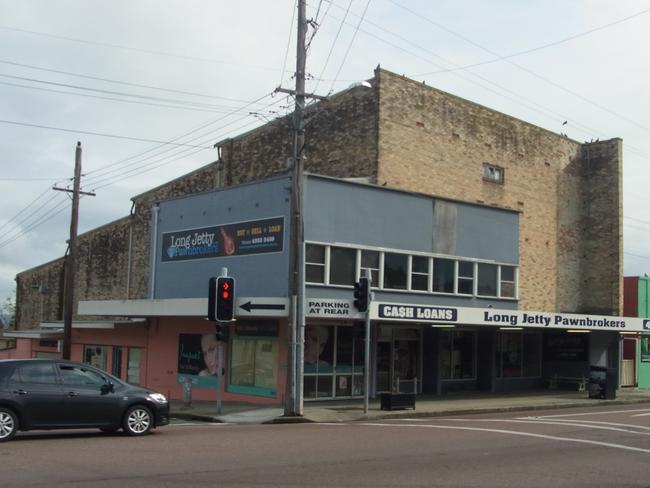
10. Long Jetty Savoy (closed 1976)
Driving through Long Jetty today, it would be hard to spot the building that used to be the Savoy Theatre — unless you knew what you were looking for.
Now home to a pawn brokers shop, the 840 seat Savoy opened to the movie going public at the start of 1956. It was heavily dependent on seasonal holiday trade. It was sometimes known as Wain’s Theatre after it’s owner who ran the show until 1969 when he faced declining audiences.
It was then leased to the projectionist and run by his family until it closed in April 1976 when it was remodelled for a Rite-Way supermarket.
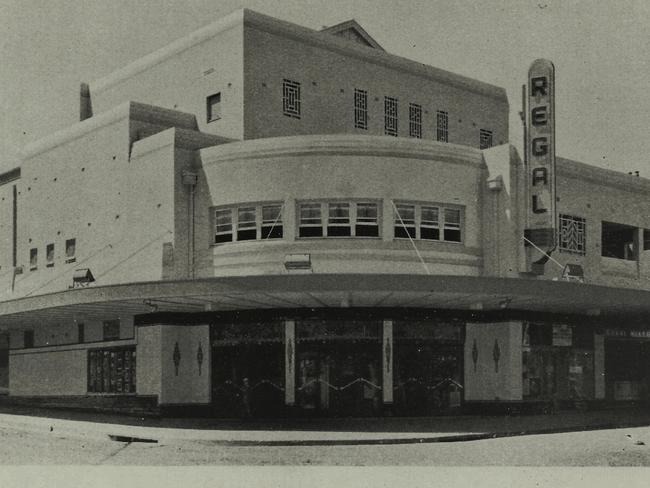
11. The Regal (closed 1975)
Many who remember the Gosford Regal could weep at the loss of one of the city’s grandest old buildings. It stood on the corner of Mann and Donnison Streets where the Commonwealth Bank now stands (empty). The Art Deco/Moderne style building opened in September 1937 with capacity of 617 in the stalls and 365 in the dress circle. Designed by noted theatre architect of the time Aaron Bolot and decorated by Arnold Zimmerman who also designed Sydney’s State Theatre. With a grand staircase, curved window frontage, a roof garden with glimpses of Brisbane Water and the surrounding hills — it must have been quite a destination. It’s equipment was considered to be state of the art.
One local recalled it’s importance in the social fabric of Gosford right into the 1970s:
“The Regal theatre that used to be on the corner of Mann and Donnison Streets was big and grand, or seemed so to me as a kid. It had an upper balcony that was pretty cool. That’s where Mum took us in school holidays if there was a new Disney movie on. I think I saw the Love Bug and those type of movies there.”
It finally closed on December 18 1975. The architectural landmark was demolished to make way for the bank in November 1978.
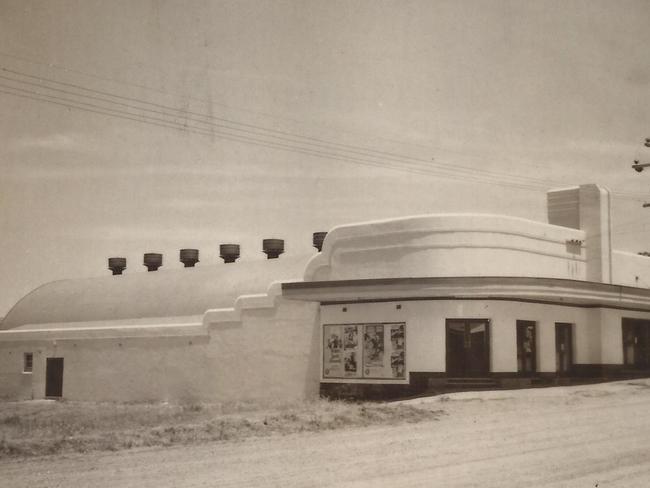
12. Terrigal Jewel (closed 1973)
You’ll have had to be on the Central coast for more than 40 years to remember the Terrigal Jewel — which was demolished in 1975. It was located in Kurrawyba Avenue and opened in 1952 — by the well known local theatre family, the Brennans.
It’s unusual curved walls and rounded roof must have been a landmark in Terrigal in those days. Brendan Connolly recalled that while it was the smallest theatre built by the Brennan family, it was by far the most expensive due to increased costs of materials and labour.
By the 1970s the theatre was struggling with small attendances and closed for good in 1973. There was a short-lived proposal to convert it for a dance hall, but the cost of required renovations appears to have stymied this plan.

13. Wyong Astra (closed 1972)
Wyong’s Astra theatre was considered to be one of the finest movie theatres outside of Sydney when it was opened in October 1936.
It was located on the corner of Alison road and Maragaret Street, and was designed by the same architect as the Regal that opened a year later in Gosford. The interiors had the same Art Deco flare and opulence.
Brendan Connolly’s book says the theatre had an uneventful 37 year career as movie theatre and sometimes concert hall until it closed in October 1972 -mainly due to competition from television. The building was demolished in early 1973 to make way for the Wyong Plaza complex.
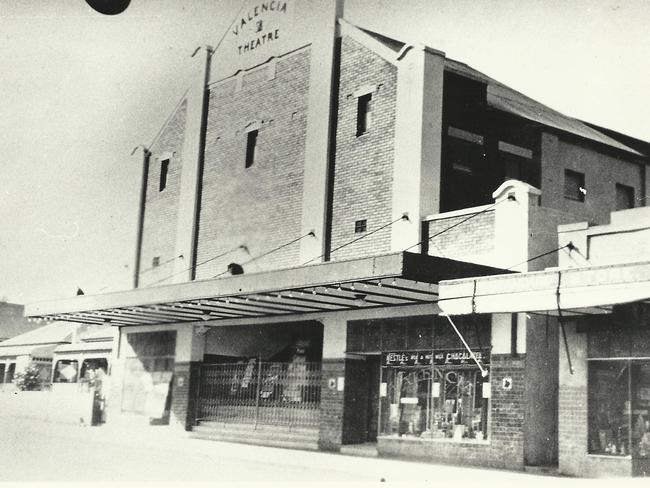
14. The Valencia (closed 1960)
While this cinema had it’s heyday well before the 1970s, the building remained for many years across the road from Gosford Railway station in Mann Street and some Coasties would remember it.
Brendan Connelly’s cinema history describes it as Gosford’s first “purpose-built” cinema and could seat 940 people — 644 in the stalls and 296 for the pushies up in the dress circle. Construction cost 15,000 pounds.
Over the next 40 years it was the key movie destination, finally closing on May 14, 1960. It was gutted to become the Valencia Shopping Arcade. Later it’s name changed to Waterfall arcade. Today the peak of the front of the building is visible above the modern street facade, and if you drive around to Watt Street Gosford you can walk across a car park to see the rear part of the old theatre.
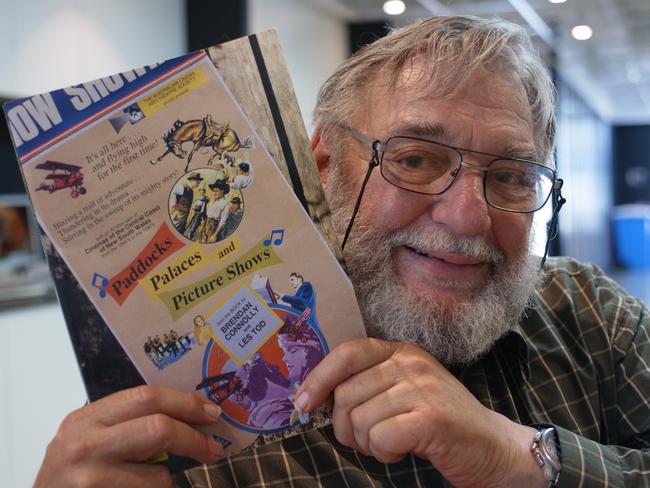
Buy the book
Brendan Connolly, 70, is co-author with Les Tod, of the definitive history of Central Coast cinemas, Paddocks, Palaces and Picture Shows.
His grandfather Edward Brennan was a leader in the days when movie theatres were big business on the Central Coast. Brennan built the Wyong Astra, the Prince Edward at The Entrance (now called The Majestic) Gosford Regal, and the Terrigal Jewel. He also bought another early Gosford movie palace, The Valencia, the remains of which are now hidden behind a modern retail shop facade in Mann Street.
Mr Connolly came from Sydney to live on the Central Coast and spent his whole life working in movie theatres.
“Things have changed completely from those days,” Mr Connolly said.
“Back then it was what everyone did on a Saturday night.
“It was a more social thing — people got dressed up.
“Some people who came into the Regal at Gosford had a permanent booking in the dress circle”
• You can buy Brendan Connolly’s book, Paddocks Palaces and Picture Shows from the Henry Kendall Museum in West Gosford.
CINEMA TIMELINE
Still operating
The Entrance Majestic — began life as Prince Edward 1934 (still operational)
Avoca Beach Theatre 1951 — to today
Tuggerah Events Cinema (previously Greater Union) operational 1995-
Erina Hoyts 1996 — still operational
Cinema Paradiso 1999 — still operational
Disappeared in the 2000s
Kincumber Ritz 18/6/1988 — 29/8/2007 (demolished 2012)
Gosford Village Twin opened 1975 closed 2002 (demolished)
Disappeared in the 1990s
Budgewoi Halkeulani Public Hall 1968-1990 (now a community hall)
Disappeared in the 1980s
Erina Skyline Drive-in 1958-1985 (demolished)
Toukley Public Hall closed 1981 (demolished)
Disappeared in the 1970s
Long Jetty Savoy Theatre 8/5/56 to 17/4/76 (now a pawn broker store)
Gosford Regal Cinema Opened 1937 — 1975 (demolished 1978 — now Commonwealth Bank)
Patonga Cinema 1941-1975 (demolished)
Woy Woy Cinema 13/4/1922 — 1974 (demolished)
Terrigal Jewel Cinema 22/1/1952 -1973 (demolished)
Wyong Astra Cinema 13/10/1936 — 14/10/1972 (demolished)
Disappeared in the 1960s
Ettalong Beach Cinema 1922-1968 (Demolished)
Davistown Cine 1951/2 — Sept 1962 (aka Davistown Progress HaLL)
Kanwal Public Hall opened 1929 — 1962
Umina Cinema 14/4/1954 — September 1961 (demolished)
Toukley Civic Theatre/Cinema 1946-1961 (Destroyed by fire)
Gosford Valencia 1927 — 1960 (became Waterfall Arcade, 205 Mann, rear still there)
Pearl Beach Memmorial Hall 1949 — 1960S (still a hall)
Disappeared in the 1950s
Ourimbah School of Arts Mechanics 1951-1959
Killarney Vale Public Hall — closed 1958 (aka Royal)
Erina Public hall 1923-1955 (destroyed by fire)
Ourimbah Open Air 1949-51 (demolished)
Avoca Beach Garden Theatre 1949-51
Disappeared in the 1940s
Ourimbah school of arts Multipurpose 1923 to 1949 (destroyed by fire)
Terrigal Public Hall 1921 — 1941 (aka Wilsons Picture Palce of Terrigal Picture Palace — destroyed by fire)
Disappeared in the 1930s
Wyong Coronet 20/4/1923 — 18/7/1936 (destroyed by fire)
The Entrance Wintergarden Cinema and dance hall 1921-1934 (Destroyed by fire)
Disappeared in the1920s
Gosford White’s Hall multipurpose 1924-1928 (demolished)
Lisarow Public Hall 1922 — C1927
Narara Public Hall opened 12/6/1917 — 1926 (destroyed by fire)
Yarramalong School of the arts opened 1924 — 1925
Long Jetty Cinema 1923 — 1924 (aka Dikieland Dance Hall)
Kincumber School of Arts — opened 1914 — 1923.
Ourimbah multipurpose 1904 to 1922 (destroyed by fire)
Woy Woy Pipers Hall Cinema 1911 -1920s (demolished)
Disappeared before the 1920s
Gosford School of the arts opened 1888 — 1916


